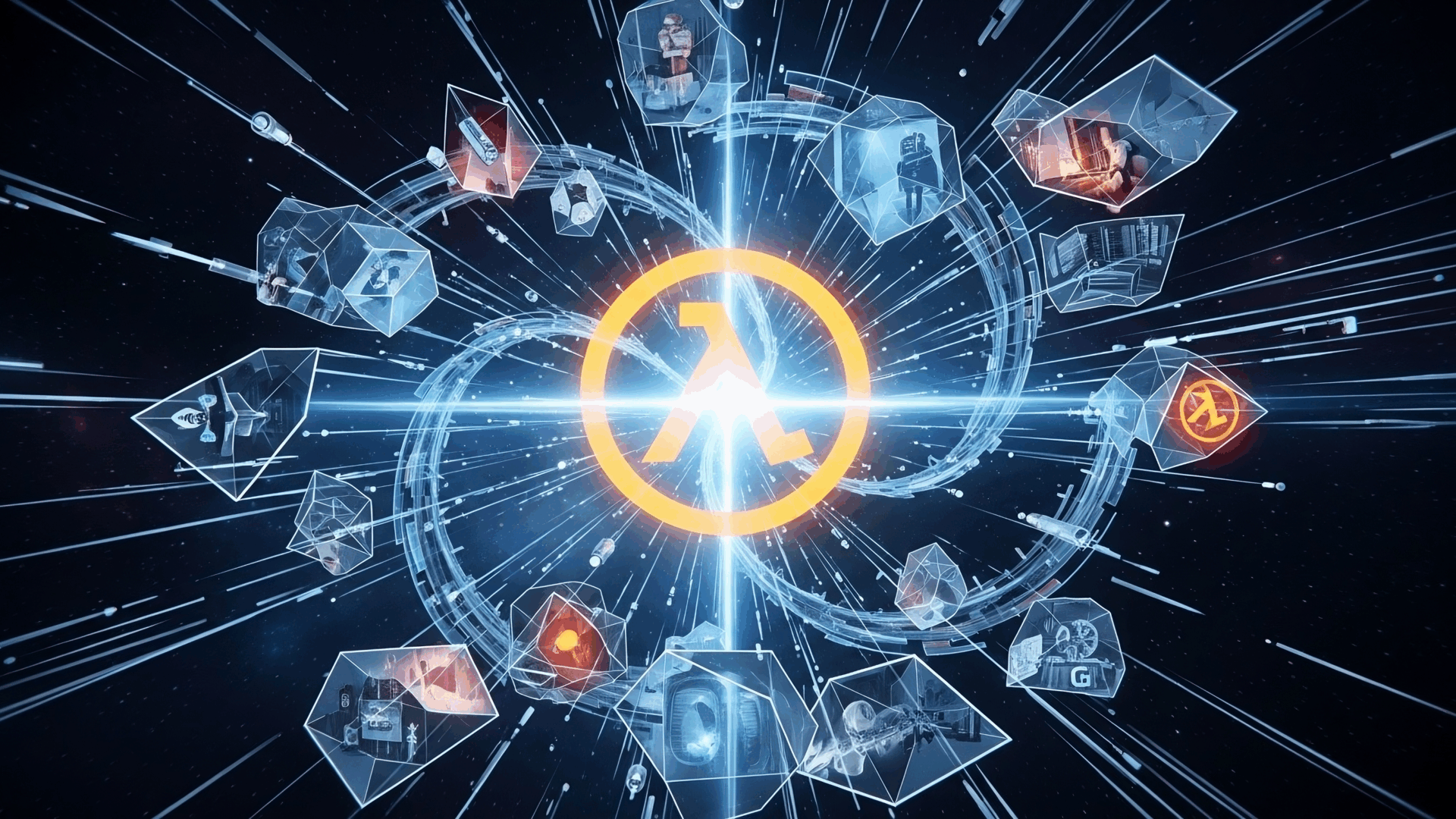The making of Half-Life: a quarter-century of gaming history
So Half-Life is now 25 years old, and to celebrate this special anniversary, Valve has released …

WAAAIITTT! HALF LIFE TURNED 25? A QUARTER OF A CENTURY ALREADY? Holy crap, it feels like Valve released Half Life yesterday. Or at least the day before. Maybe last week. But not an entire human generation ago, at the end of the last millennium, years before 911, when China was still called the Rising Dragon from the East and texting was considered the latest shit. 25 years? Damn, I’m old!
The making of Half-Life
Anyway. For those who have never heard of it, Half-Life is a first-person shooter game developed by Valve, our beloved gaming platform company founded in 1996 by former Microsoft employees Gabe Newell and Mike Harrington. The game was released in 1998 and became an instant hit, winning over 50 game of the year awards and selling around 10 million copies worldwide. It is widely regarded as one of the most influential and important video games of all time, changing the way games look, feel, and work forever.
Half-Life was not the first FPS game, think Duke Nukem 3D, DOOM, Quake, or Wolfenstein 3D, but it was the first to combine a compelling story, realistic graphics (at least for the time), immersive sound, and advanced physics into a seamless and interactive experience. Unlike previous shooters that relied on linear levels, scripted events, and cutscenes, Half-Life used a technique called “continuous narrative,” which meant that the game never broke the immersion by playing pre-rendered videos, and instead used in-game cutscenes and live-action scripts to tell its story, which was quite stunning for the time. One of the most famous is the minute-long opening sequence, in which we slowly travel through the levels and areas of the entire game on a train, giving us a sense of what to expect later in the game. During this sequence, we are doomed to stay on the train, unable to do anything but walk up and down the train and observe the surroundings – but man, it was stunning. We, that’s Gordon Freeman, a scientist working at a secret research facility called Black Mesa. When a disastrous experiment goes awry – because scientific experiments always tend to go awry in games – we must fight our way through hordes of aliens, soldiers, zombies, and alien-soldier-zombies while uncovering the truth behind the incident and the mysterious G-Man, a pale, skinny guy who randomly appears in cutscenes and the game’s background and seems to be watching our every move.
Half-Life introduced several innovations to the FPS genre, such as the use of a crowbar as a melee weapon (okay, that’s not an innovation, but still legendary), the ability to interact with objects and NPCs, the use of scripted sequences and environmental puzzles, and the incorporation of stealth and horror elements. In addition to these technical innovations, the game also featured a robust multiplayer mode that spawned several popular games such as Counter-Strike, Team Fortress, and Day of Defeat. Games that redefined what we know today as multiplayer gaming and forever shaped the e-sports scene. Half-Life was so different and refreshing from previous games that it inspired an entire generation of FPS games to follow, the most famous being F.E.A.R., BioShock, Portal, and of course Half-Life 2, considered by many to be the best game ever made, but still unfinished to this day (looking at you, Episode 3 🤨).
Upon its release, Half-Life was praised by critics and players alike for its groundbreaking gameplay, immersive atmosphere, and compelling story. The game received universal acclaim and has a Metacritic score of 96/100 with a user rating of 9.1. It has won numerous awards and appeared on many lists of the greatest games of all time, including IGN’s Top 100 Games of All Time, PC Gamer’s Top 100 PC Games, and Time’s All-Time 100 Video Games. Some elements of the game have even become part of Internet culture – the crowbar, the headcraps, and the sound of the health station are well known out there, and referenced in many other games and media.
Yes, Half-Life is truly more than a game, it is a cultural phenomenon that has shaped the gaming industry and gaming culture. It has a loyal fan base that continues to play and mod the game to this day, and Valve still releases updates from time to time – from small patches to graphical overhauls – which is fan service at its best. Beyond the game, Half-Life has spawned a media franchise that includes several sequels, spin-offs, comics, books, and fan films. And even after 25 years, it far from dead: the latest entry in the series is Half-Life: Alyx, a VR game that was released in 2020 and received critical acclaim for its immersive atmosphere and outstanding graphics and physics. Speaking of critics, gamers are also still waiting for the elusive Half-Life 2 Episode 3 and Half-Life 3, which along with Duke Nukem Forever has become a meme and symbol of hope and frustration for the gaming community, and we’ll probably never see them. Nevertheless, Half-Life is a game that changed gaming, and its legacy will live on forever. And what better way to celebrate this legendary masterpiece than with a one-hour documentary from Valve about the making of Half-Life on its 25th anniversary, showcasing all the ideas, thoughts, challenges and hard work that went into creating this game?
Half-Life: 25th Anniversary Documentary
Hero image: Generated with google/imagen-4 on June 20, 2025 at 4:49 PM.


Reply article Reply answer